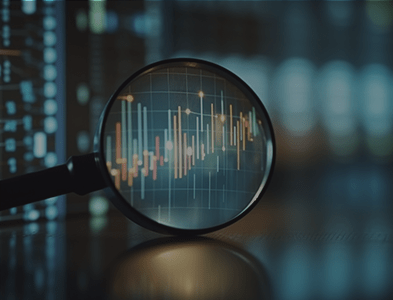Why Data Analytics Can Be Crucial in Litigation Outcomes
Why Data Analytics Can Be Crucial in Litigation Outcomes
Litigators who effectively harness data analytics in complex commercial litigation can win more client business and gain strategic advantages over opposing counsel because of the early case insight, cost reduction, and time savings provided.
Antitrust, class action, employment, and healthcare fraud cases are examples of litigation that may require terabytes (or even petabytes) of structured and unstructured data to be identified, held with custodians, and analyzed to inform early case strategy and ultimately determine the monetary value of any economic damages derived from the various data sources.
These five Stout data analytics experts teamed up with Steve Sahara, Director in Stout’s Disputes, Claims, & Investigations practice, to discuss key aspects of data analytics in litigation:
- Fotis Konstantinidis, Managing Director and Practice Leader Digital & Data Analytics
- Mike Vitale, Director, Disputes, Claims, & Investigations
- Steve Buffo, Managing Director, Disputes, Claims, & Investigations
- Josh Swedlow, Director, Disputes, Claims, & Investigations
- Matt Raiff, Managing Director, Disputes, Claims, & Investigations
Steve Sahara: What is important for litigators to know about data analytics?
Steve Buffo: First, data analytics is relevant to virtually every litigator. Even considering proportionality principles under Rule 26, you really can’t avoid large data sets anymore.
Many initial assessments of electronically stored information (ESI) in a litigation context focus necessarily on individual custodians and their ESI: emails and attachments, user files stored on hard drives or on networks, text messages, and the like (i.e., unstructured data). This focus enables counsel to map the volumes of unstructured data to potential fact witnesses and other relevant deponents. What can often be overlooked in that assessment is the relevance of structured data from a company’s accounting, payroll, or other systems, particularly in matters requiring an assessment of financial damages or where there are class claims or mass claims. This information usually resides with a corporate custodian rather than an individual custodian.
Practically, the assessment of data custodians should be done early on to identify and preserve access to important data sets. Corporate custodians have “shorter memories” than individuals because of data retention policy, IT staff turnover, system upgrades, and cloud migration, so getting ahead on data custodian assessment process upfront can be critical to litigation outcomes. This is where data analytics capabilities are extremely valuable to the litigator.
Steve Sahara: How can data analytics help counsel evaluate the opportunity/risk of potential litigation?
Matt Raiff: Most importantly, data analytics can play a key role in early case assessment (ECA). The sooner that counsel can use data analytics to quantify the key issues of potential litigation, the better. A company does not want to blindly walk into a multimillion-dollar lawsuit without having a sense as to the value of the underlying assets, and data analytics (even just through a sampling of data) can often reveal whether an issue is a $10-million or a $1-billion problem. Knowing this information can be crucial for counsel to strategize a go-forward plan, such as approaching settlement or deciding to litigate in the courtroom.
A data analytics specialist can process and understand swaths of data and then articulate the relevant statistics to general counsel or litigation funding partners. Understanding what that data can and cannot show will likely allow counsel to be tremendously cost effective in identifying where to focus efforts. Having a consultant that can describe what that empirical data is capable of in the courtroom is often vital. We ourselves are frequently asked to analyze data early on in a litigation so that we can work closely with counsel as they work through the facts of the matter and provide them with efficient guidance as to where they may want to prioritize their efforts.
Steve Sahara: What’s an example of Stout’s data analytics use in litigation?
Josh Swedlow: In many of our class action litigation matters, data analytics plays a central role in our work due to the volumes of data for thousands of potential class members over long periods of time. Through our review, we are able to efficiently normalize, rationalize, and analyze the large underlying data sets to assist counsel with assessing potential class members and determine potential exposure. Critically, we then overlay our expertise with accounting and other core systems, economic variables, and business processes to understand the data more holistically and intelligently to ensure the final conclusions from the data analysis are not only accurate, but meaningful and relevant.
In many cases, a purely quantitative database analysis can miss important distinctions (i.e., data anomalies and interpretations resulting from system transitions and/or upgrades), leading to flawed analyses and opinions. Getting the right data analytics partner can be critical to advancing your case, but getting the wrong data analytics partner can create significant headwinds.
Steve Sahara: What are some examples of Stout’s work in data analytics within insurance litigation?
Mike Vitale: In one specific set of cases, we’ve represented insurers going up against pharmacies in disputes over reimbursement rates. This work involves massive data sets, some of which have hundreds of millions of records in a single data table. Our data analytics team includes SQL (structured query language) and other coding specialists, allowing us to run analyses on those voluminous data sets extremely quickly. Work in this area involves processing data on a case-by-case basis to calculate damages, so being able to quantify data analytics efficiently is important.
We’ve also been hired to investigate insurance billing issues; one case that sticks out is when we represented a claims processor that had issues with duplicate billings. The insurer contacted our client, and we were brought in to determine what was happening with certain billings and whether fraud was occurring. Fortunately, we were able to avoid litigation by determining the root cause of the issue and quantifying the dollar value that needed to be remitted to the insurance company.
Steve Sahara: How does the Digital & Data Analytics team provide support for disputes and litigation?
Fotis Konstantinidis: Our team of data scientists and software engineers is involved when advanced statistics, data retrieval, or big data analytics is needed. For example, we have recently worked on two cases to assess damages claims in the automotive industry where sampling theory was used to calculate total damages. We had to review the statistical methodology used and come up with an alternative statistical analysis. In these cases, we leveraged software programming languages used for statistical computing and machine learning.
Additionally, our group is involved when retrieval and cleaning of big data sets is needed. This is a necessary step before the data is analyzed to produce meaningful insights that will be used in expert analysis and litigation. We use several ETL (extract, transform, load) tools to ensure that the data sets are efficiently extracted from different sources, including databases, accounting software, and customer data platforms. In several cases, the data sets have inconsistent or missing data points, so our team uses appropriate methods to efficiently correct data sets that contain billions of records.
Lastly, our group has experience in analyzing large sets of unstructured data (pdf, word processing files, web pages, or audio files, among others) where we use appropriate storage structures (e.g., data lakes), query the data efficiently to gain insights, and provide data analysis reports or clean data sets to relevant parties to meet their format specifications.






